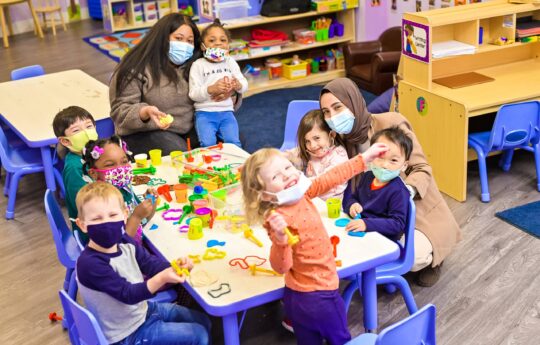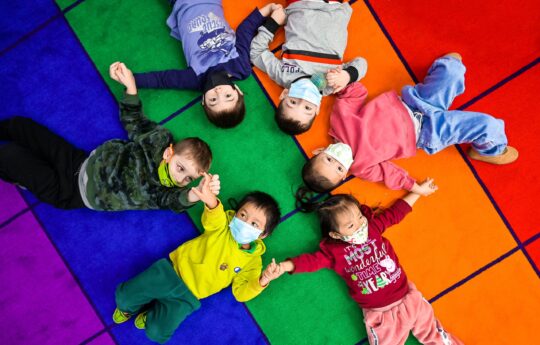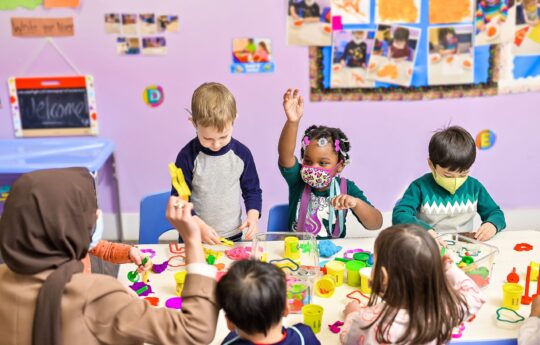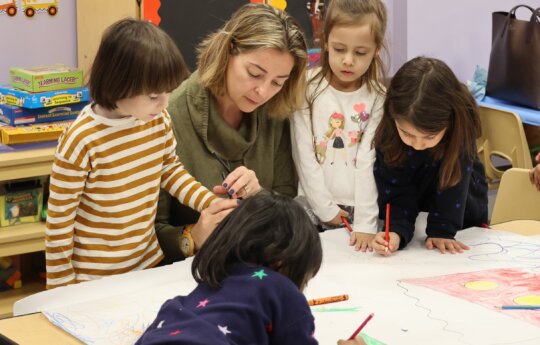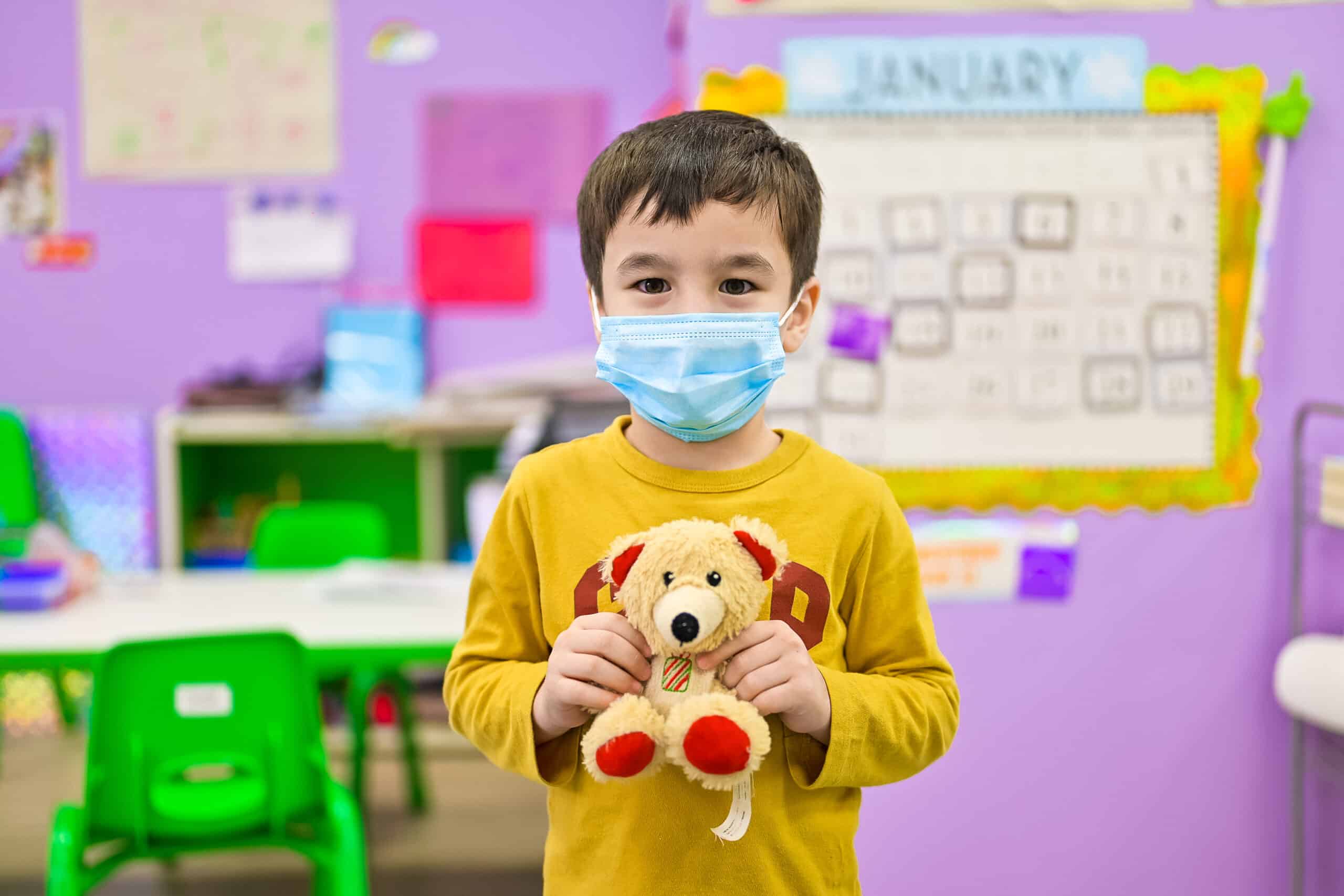
Preschoolers stand out for their boundless energy and curiosity. And this might keep their parents in constant tension. Children pick up numerous new skills and learn a lot at during this time. It sounds wonderful, but parents are well aware of how challenging it is to manage young children who cannot sit still for even a short period of time. Therefore, social distancing for a child can be as hard as it is for the parents. Here are some tips what to do during this period:
- Aiding your kid to improve communication skills;
- Teach your kid to pay attention;
- Instruct the kid in teamwork;
- Teach your kid to adhere to instructions;
- Teach the kid how to use a stationary;
- Help the child develop independence;
- Establish a schedule for the kid;
- Don’t discipline the child too harshly;
- Avoid giving in to the child’s temper tantrums;
- Do not treat a child like an adult;
- Avoid flat-out refusing the child’s requests;
- Praise the child for good behavior;
- Do not set too high expectations for the child;
- Set a positive example for your youngster;
- Establish a close emotional bond with the child.
Let’s go into greater detail about the most important of them.
Schedules and Routines
Time management is a crucial aspect of modern living. The child must be integrated into schedule-based living from an early age, progressively including them in the process of developing a routine. For the preschooler, it’s crucial that everything goes as planned and follows the typical schedule. There isn’t a home schedule for kids that works for every family universally. As a result, we have chosen some fundamental guidelines that you may use to establish everyday activities for a child.
Parents should try to match the daily routine at home as closely as possible to the daily routine in the preschool facility in order to ease the child’s transition to the conditions there, especially after the social distancing is over.
Any person, regardless of age, must get enough sleep. It helps with the restoration of energy used while you were awake. The typical amount of sleep for children over the age of two is 11 to 12 hours. The youngster grows and gains knowledge of the world when awake. It is crucial to create a logical daily schedule that would take into account the child’s age-appropriate needs for nourishment and physical activity in order to develop naturally. Keep in mind that the ideal daily schedule enables discipline (helps maintain order in the area where the child plays, studies, etc.); improves health; develops skills for a healthy lifestyle.
The following factors should be considered by parents while creating a daily schedule at home:
- when creating the daily plan, it’s crucial to consider the child’s age-related characteristics and leave enough time for sleep;
- the youngster must be introduced to the daily routine gradually;
- the defined timetable must not be breached, and conformity with the intended schedule must be consistent and methodical;
- the proper daily routine must involve adhering to the sanitary and hygienic regime;
- it’s important to spend enough time outdoors with the child and to create environments that encourage him to engage in a variety of motor activities. For example, assist the child in descending and ascending the slide’s stairs, stepping over obstacles, carrying strollers or toy vehicles, etc.
Screen Time
Digital technology cannot be viewed as solely a harmful or positive thing. When humanity is forced to restrict movement and physical contact, screens enable us to stay in touch with our loved ones, continue our studies, and feel closer while still being apart. The amount of time a youngster spends behind the screen that is beneficial will depend on whether they are learning or honing their skills using various digital tools. What are bad screen habits? YouTube, Netflix, and TikTok are the platforms where children spend the most time. And here is where screens pose the greatest risk and harm since the child starts to view the device as the most alluring and easily accessible form of entertainment. In other words, kids spend time watching entertainment on screens rather than playing actively at home or with friends on the playground.
It is recommended for parents to monitor regular breaks in addition to the overall amount of time a child spends in front of a screen since doing so shields the child’s brain from overstimulation and avoids addiction. A maximum of 40 minutes of screen time a day is advised for children under the age of 10.
Parents Prioritize
First and foremost, parents should plan their days so that they as little as possible diverge from the children’s institution’s regular schedule. Psychologists advise writing a thorough daily plan on paper or stickers and hanging it so the youngster can see it all the time. They must have a clear understanding of what to expect throughout the day, including when to play games, read, and relax.
What activities should be prioritized during the day?
- Playful activities
Playtime activities help children acquire the skills and talents needed for self-care and adult assistance. Using a doll or other toy, the kid imitates and models cleaning, washing, dressing, eating, undressing, and other activities during tale role-playing games.
- Chores
Children like to do some household chores on their own, such as sweeping, setting the table, and washing the dishes. As a result, the kid has to be given work responsibilities.
- Artistical productivity
The child generally enjoys these activities the most: drawing, sculpting, appliqué, and construction. The youngster can express his or her ideas and creative abilities in various kinds of artistic and useful activities
It’s crucial for parents to keep an eye on how much time their kids spend on a computer or tablet. And it is essential to plan a vacation outdoors.

